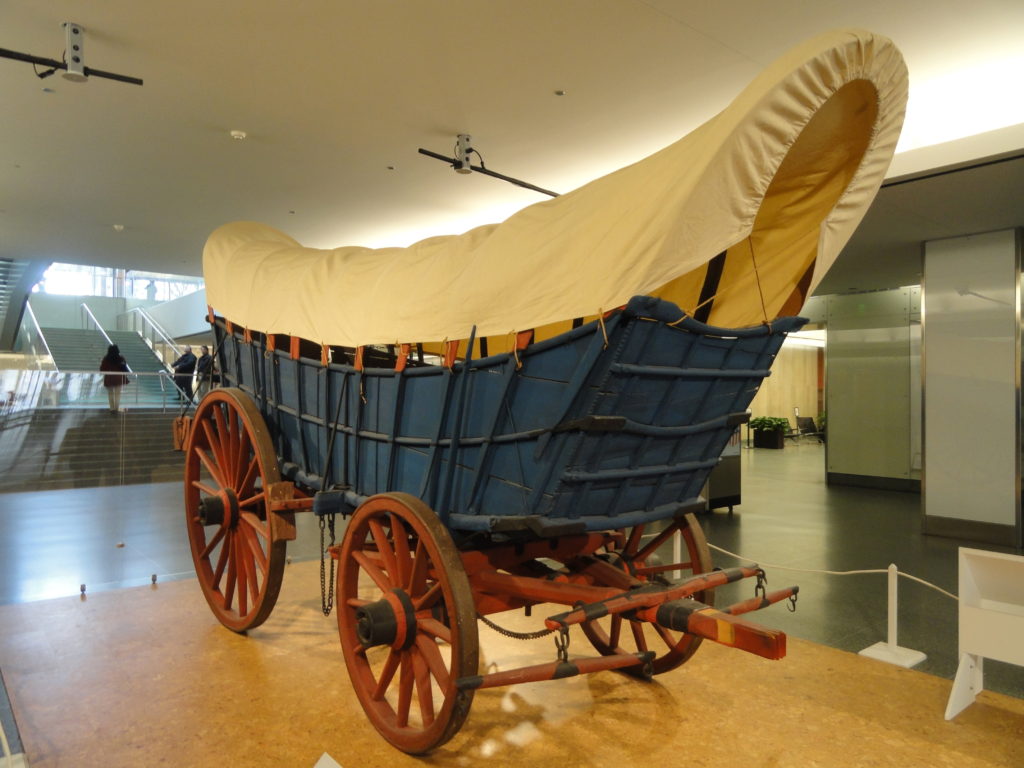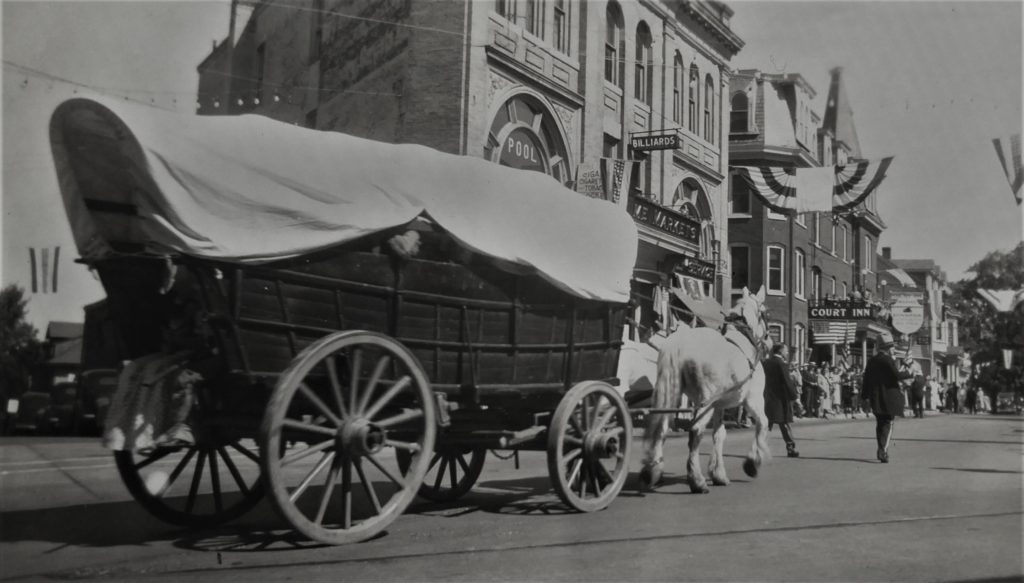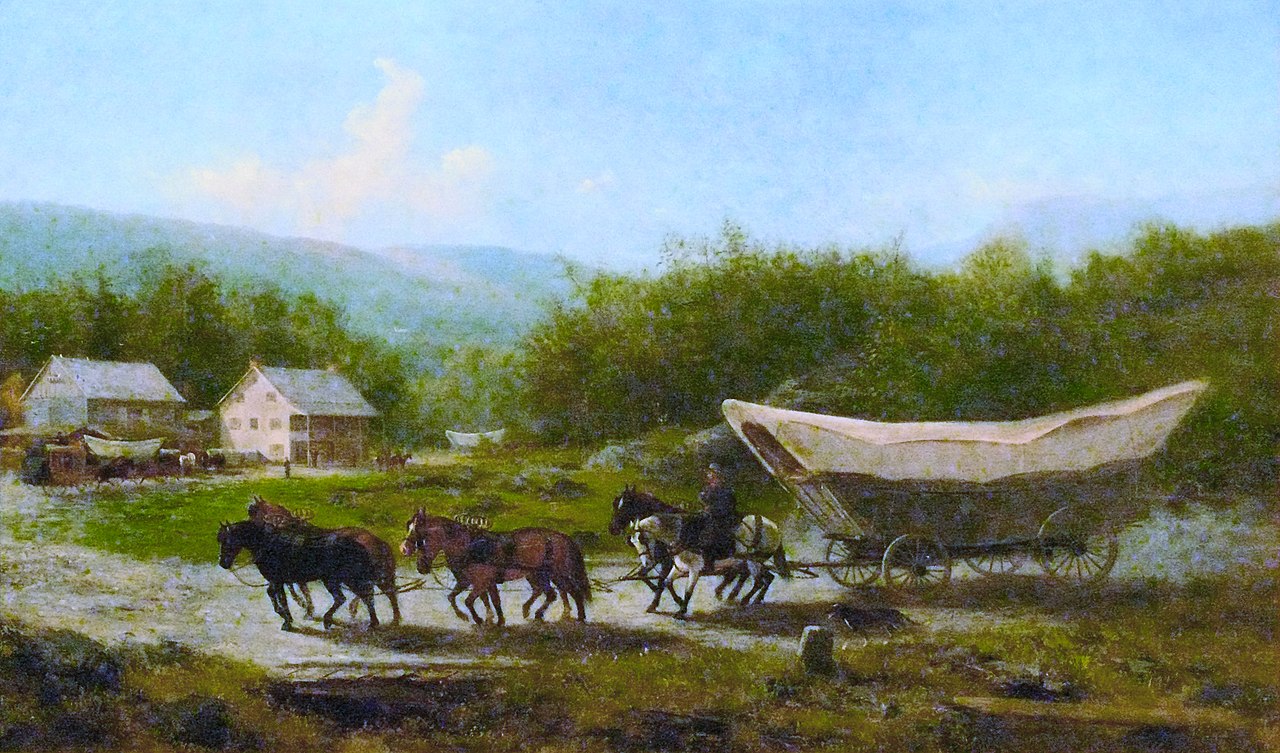Michael Butz and his 6-horse team were show stoppers in the 1700s.
These days you seldom get to know a FedX, UPS or Amazon Prime driver. They’re always in a hurry. In Bucks County’s early days, the delivery service you could count on for heavy merchandize was a Conestoga wagon hitched to a 6-horse team and guided by wagoners who were celebrities. For about 100 years, these haulers were omnipresent on Easton Road, the main “highway” linking manufacturers in Philadelphia to customers in Willow Grove, Doylestown, Upper Bucks and as far west as Bethlehem, Easton, Allentown, Mauch Chunk (today’s Jim Thorpe) and Wilkes-Barre in the Pocono Mountains.
Easton Road is today’s Route 611, a 110-mile-long artery emanating from Broad Street in Philadelphia and passing through Montgomery County, much of Bucks, the Lehigh Valley and into the mountains. In the 1700s and early 1800s, the route was alive with Conestoga freight lines with teamsters walking beside their rigs and recognized throughout the region.
One of the best known was Michael Butz. He got into the freight business from his home in Belvidere, N.J., a small town about 15 miles above Easton on the Delaware River. What made his business distinctive is not only his dependability but the fact his Conestogas were pulled by six coal black draft horses 6-feet-high at the shoulder. Residents along the route marveled at his massive, blue wagon adorned with brass and iron bells and wheels with red spokes, the rear wheels as tall as the horses. The animals wore elaborate head gear, often pom poms adding to Butz’ showmanship as his 60-foot-long rig rumbled through town.

Teamsters of note on the route were Zelner Klotz Zumstone, Joseph and David Stover and the Bewighaus, Meyer and Fretz families. Taverns catered to the drivers as 100 or more of the cargo haulers passed every day on Easton Road. The inns featured painted images of Conestoga wagons on roadside signs to indicate wagoners were welcome since most could not read. Popular with the drivers in Bucks County were the Cross Keys Tavern in Doylestown, the Plumsteadville Inn in Plumstead Township and the Piper Tavern in the Bedminster village of Pipersville.
Conestogas date back to 1717 when immigrant Mennonite craftsmen living along Conestoga Creek in Lancaster County conceived them for rough roads in Pennsylvania, Maryland, Virginia and Ohio. They were awesome in their construction with heavy wheels and axles set purposely high above the road so they could pass over deep ruts and tree stumps. High side walls and floors curved upward at both ends prevented cargo from shifting or spilling out. Tar sealed the seams of the boards so the wagons could cross rivers without leaking. Waterproof white canvas covers soaked in linseed oil were stretched over wooden hoops to protect the driver and contents from heat and storms.
Conestogas could carry 6 tons of cargo and travel 15 miles in a day. A trip from Philadelphia to Wilkes-Barre would take 8 days. Drivers primarily walked alongside their wagons. But they also rode bareback on one of the rear horses and used a “jerk line” tethered to a lead horse to control the team.
Eighteenth Century teamsters like Michael Butz were indicative of a certain look, according to Roger White, curator at the National Museum of American History in Washington. “The wagoner, like his wagon, was tough, robust, and picturesque. He wore colorful flannel shirts and smoked long, thin cigars nicknamed ‘stogies.’ . . . He walked, rode the left horse nearest the wagon, or sat on the lazy board, which projected from the left side. In summer he slept outdoors, and in winter he bedded down on a roadside tavern floor near the fireplace. His horses ate from the feed box, which he removed from the rear and attached to the wagon tongue.”

History has a habit of giving way to something new. The Conestoga wagons lost their footing in local commerce with the completion of the Delaware Canal in 1832. Transporting coal and commodities between Philadelphia and the Poconos on canal boats became the primary mode of transportation. Each vessel could carry 100 tons of freight pulled by a single mule. That put a crimp in business for the Conestogas with their 6-ton capacity. But as in the case of the wagons, the arrival of railroads and motor vehicles by 1932 ended the commercial boat era on the canal.
Bucks historian William W.H. Davis in 1905 eulogized the passing of the Conestogas and the teamsters who once toiled behind them between Philly and the Poconos. “If their adventures and experiences could be recalled,” said Davis, “they would be read with deep interest and enjoyed by a generation that knows not of them, except on hearsay.”
***
Sources include “The History of Bucks County Pennsylvania from the Discovery of the Delaware to the Present Time” by William W.H. Davis published by the Lewis Publishing Company in New York in 1905; “Covered wagons and the American frontier” posted on the web at https://americanhistory.si.edu/blog/2012/10/conestoga-wagons-and-the-american-frontier.html, and a history of Conestoga wagons produced by the History Channel and posted at http://www.history.com/topics/westward-expansion/conestoga-wagon

